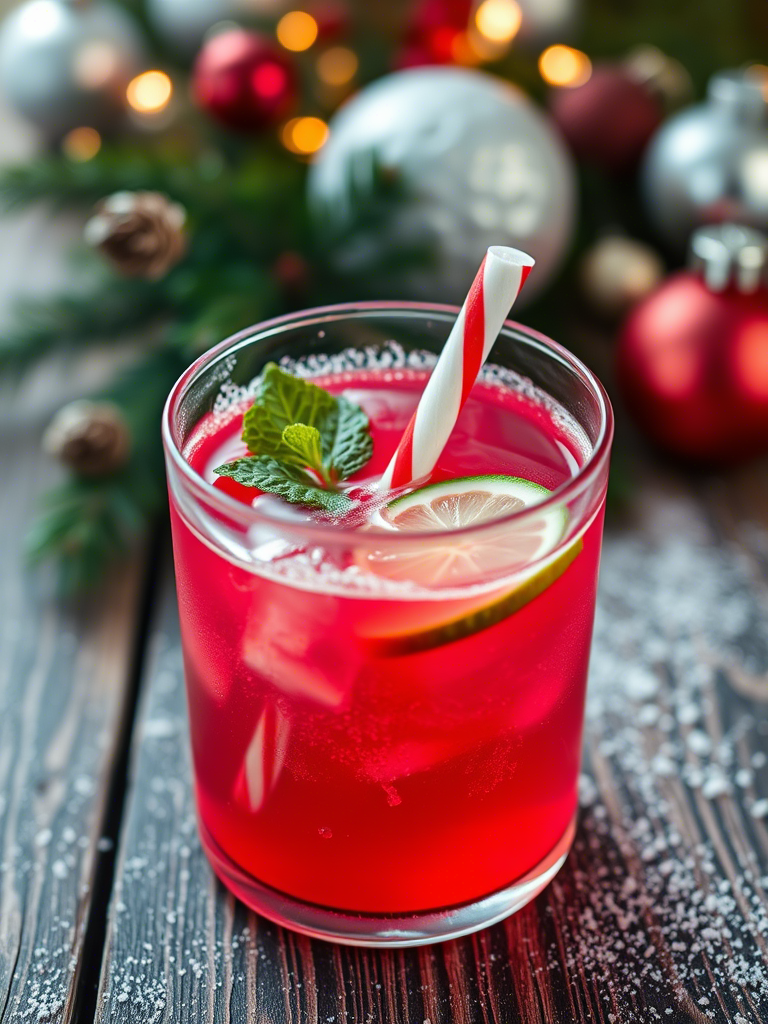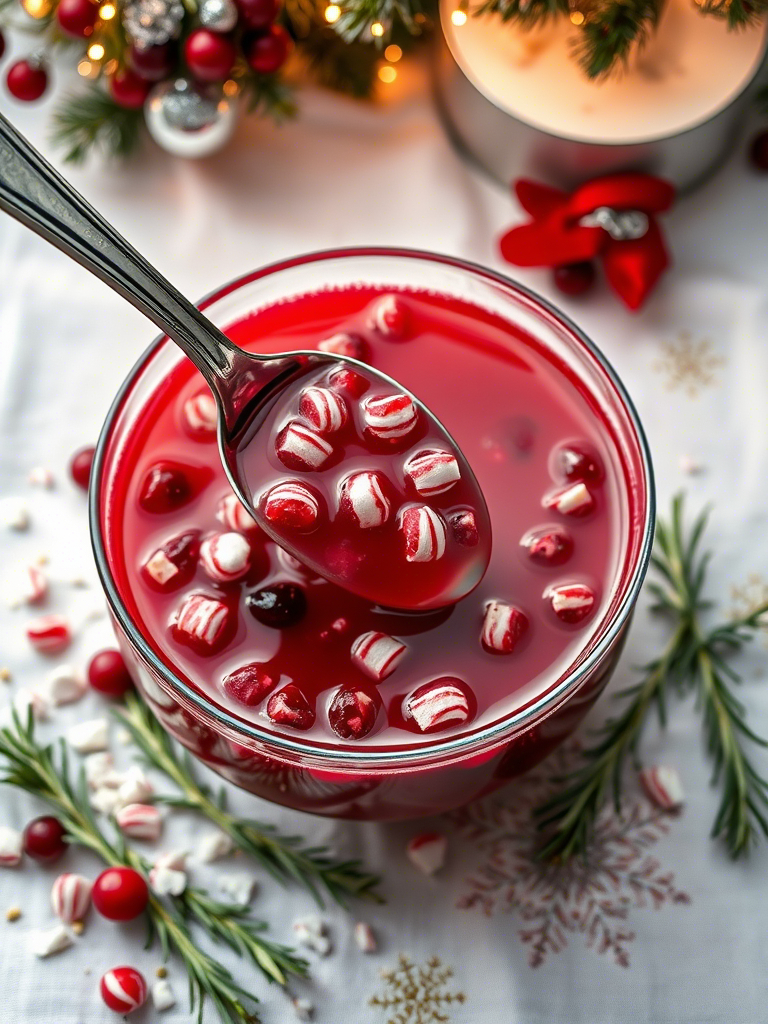Let’s be honest—most holiday punches taste like melted gummy bears. Too sweet, too fizzy, too… uninspired. But not this one. Candy Cane Christmas Punch is a different animal. It’s cool, it’s nostalgic, and when done right, it’s sophisticated enough for the mixology crowd and playful enough for the kids’ table. That’s not an easy combo to land.
This article digs deep into the art and science of Candy Cane Christmas Punch—where it came from, how to make it exceptional, and what every pro chef or beverage director should know about elevating this underestimated classic. We’ll bust myths, pull in some flavor chemistry, and offer variations that could headline your next holiday menu. No fluff, no filler.
Because peppermint deserves better than a walk-on role.
The Origins: More Than Just a Gimmick
Candy canes have been kicking around since at least the 17th century, right? German choirmasters were handing out sugar sticks to keep kids quiet during Christmas Mass. Add the crook shape a century later, and boom, you’ve got a branding win.
But it wasn’t until the mid-20th century—when American kitchens fell in love with punch bowls—that someone had the bright idea to melt candy canes into drinks. Still, this punch didn’t really take off until Instagram got involved. Those pink swirls, whipped cream peaks, and crushed peppermint rims? They photograph too well.
Today, the punch is on menus from Denver ski lodges to Brooklyn cocktail dens. It’s gone from kitschy potluck staple to seasonal flagship. There’s even a mocktail version showing up at fast-casual chains—because peppermint sells, and it sells well.
The Flavor Profile: Why It Actually Works
At first glance, candy cane and carbonation sounds like a recipe for indigestion. But let’s slow that down. Peppermint is complex. Underneath the menthol, there’s grassy bitterness, resinous depth, and even a whisper of vanilla. This isn’t just candy flavoring. It’s botanical.
Peppermint oil contains menthol, which stimulates cold receptors in the mouth. That’s why the drink feels colder than it actually is. Menthol also acts as a flavor amplifier—it sharpens the sugar, cuts the cream, and balances acids. When paired with fat (like whipped cream or half-and-half), menthol’s intensity is softened but lengthened. The finish lingers.
Add citrus (from lemon or cranberry) and you get acid layering. Add soda, and you create bubbles that lift aroma molecules right up your nose. It’s not just a holiday punch. It’s a controlled flavor bomb.

The Core Components: A Technical Breakdown
Let’s not mess this up with shortcuts. The base structure of Candy Cane Christmas Punch depends on balance. Not just sweet vs. sour, but cold vs. creamy, fizzy vs. dense, nostalgic vs. elegant.
H2O Base
Club soda, cream soda, or sparkling cranberry—each tells a different story. Club soda keeps it dry and grown-up. Cream soda leans into the dessert angle. Sparkling cranberry gives you tart contrast. But please, no Sprite. It’s all sugar, no structure.
Cream Element
Some use ice cream, others opt for half-and-half. For pros, the trick is fat control. Too much dairy, and the drink becomes soupy after 10 minutes. Too little, and the menthol overwhelms. We recommend a stabilized whipped topping—yes, even in fine dining. Whipped topping holds shape under heat and carbonation. That’s essential when you’re serving 50 glasses on a tray.
Flavor Drivers
Melted candy canes are a must. But don’t just crush and stir. Boil with a touch of water and vanilla extract to create a peppermint syrup. It allows consistent sweetness and avoids the gritty sediment that ruins mouthfeel.
Want depth? Add white chocolate syrup or crème de menthe (for the adult version). Or try a rosemary infusion. That resin-on-resin flavor pairing is just next-level.
Alcohol Options
This punch can swing either way. For a boozy version, go with peppermint schnapps, vanilla vodka, or even a splash of white rum. Avoid gin—too botanical; it fights the mint. Baileys can work, but it muddies the clarity. You want sharp flavors, not slush.
Garnish Matters (More Than You Think)
Nobody talks enough about garnish architecture in punch. This isn’t just aesthetics—it’s functional.
Crushed candy canes around the rim serve texture. But only if they’re dry-crushed and adhered with simple syrup, not water (which melts the sugar too fast). A mint sprig? Sure. But don’t drop it in the glass—it oxidizes in 2 minutes and looks like spinach.
Mini candy canes? Cute, but they leech into the drink and mess with your profile. If you’re going that route, keep it on a cocktail skewer or clip it to the rim.
Want to wow? Try edible glitter or a mist of peppermint oil from a food-grade atomizer. One spray. That’s all. The nose will thank you.

Presentation: Punch Bowl vs. Individual Servings
Professionals often debate this. A punch bowl is dramatic—yes—but a logistical nightmare. Temperature control, dilution, and hygiene become issues fast. And with candy cane punch, texture shift is your biggest enemy.
For service, we recommend pre-chilled coupe glasses, each with a chilled base, topped fresh to order. If using a punch bowl, freeze large-format peppermint ice cubes (crushed candy canes in filtered water) the night before. It slows dilution and looks fantastic.
Pro tip: Don’t add the dairy component to the punch bowl. Serve it in layers. The visual contrast is stunning and keeps your fat components from curdling under citrus pressure.
Nutrition, Allergen Info, and Dietary Modifications
Let’s face it—this isn’t a kale smoothie. But if you’re going to serve it, know your macros.
The typical 8 oz serving runs about 200–300 kcal, mostly from sugar and cream. Dairy-free versions can be made with oat-based whipped toppings and coconut cream. These alternatives hold surprisingly well under carbonation and even enhance the mint’s grassier notes.
Sugar-free candy canes exist, but they tend to contain xylitol or sorbitol. Be cautious—these can cause GI distress in sensitive folks. If you’re scaling this recipe, it’s worth noting.
For vegan versions, avoid gelatin-based whipped toppings and check food dye sources (some reds use carmine from insects). There are excellent fully vegan peppermint syrups on the market now—seek them out.
Commercial Application: How to Monetize This
There’s money in seasonal drinks, period. Starbucks has proven that for two decades. But the key is timing and scarcity. Introduce this punch in late November, pull it by December 31st. Make it feel like a limited-edition drop, not just another drink special.
Bundle it with a dessert. Offer custom mugs. Add a “spiked” upcharge. You’ll see average ticket prices spike by 15–20% during the holiday window. One study by Technomic showed seasonal drinks boosted loyalty visits by over 12%. That’s no joke.
QR-code menus can include an AR “make-it-yourself” demo to create a sharable moment. It’s branding in a glass.
Common Mistakes Pros Still Make
- Overdiluting – Too much soda ruins everything. 2:1 ratio of base to cream is a good start.
- Serving warm – Peppermint doesn’t pop above 40°F. Chill everything, including the glassware.
- One-note flavoring – Mint alone is boring. Pair with white chocolate, orange zest, or even a tiny hit of balsamic reduction.
- Ignoring texture – Fizzy + creamy = unstable. You have 7 minutes to serve before the whip collapses and the fizz dies.
A Look at the Future: Punch in the Post-Instagram Era
We’re moving into a new visual age—AI-designed menus, hyper-personalized drink programs, edible QR codes. Candy Cane Christmas Punch fits into that landscape if it evolves.
Think: activated color layers (red beet vs. pink rose), peppermint vapor bubbles, vegan foams printed with edible ink snowflakes. This drink isn’t fading out. It’s growing teeth.
Final Sips: The Smart Way to Do Candy Cane Punch
This drink shouldn’t be an afterthought. When done right, it can anchor a whole experience. It’s got nostalgia, sensory surprise, and visual magic. That’s the trifecta. But the pros know—it takes planning, understanding, and restraint to make it shine.
Start with clean, bold peppermint. Layer your components. Respect the bubbles. And remember: presentation tells the first story. Flavor tells the last.
Make it beautiful. Make it balanced. Make it better than expected.
Because nobody remembers the mashed potatoes. But they’ll remember that punch.
FAQs
What is Candy Cane Christmas Punch?
A festive holiday drink combining peppermint, cream, carbonation, and optional alcohol for a nostalgic yet elevated experience.
Can this punch be made dairy-free?
Yes, use oat or coconut-based cream alternatives and non-dairy whipped toppings for a vegan-friendly version.
What’s the best alcohol to use?
Vanilla vodka, peppermint schnapps, or white rum work best—avoid overly botanical spirits like gin.
Should I use real candy canes or extract?
Melted real candy canes create a richer, more authentic flavor than peppermint extract.
How do I prevent the cream from curdling?
Avoid mixing dairy directly with acidic ingredients—layer it or use stabilized whipped toppings.
How do I keep the punch cold for parties?
Use large-format ice cubes with embedded candy cane bits and chill all components beforehand.
Can I make this ahead of time?
You can prep the syrup and base in advance, but mix with cream and garnish just before serving.
What’s the ideal punch-to-cream ratio?
Start with a 2:1 ratio of punch base to cream for balance and adjust based on sweetness and texture.
Is this suitable for kids?
Absolutely—just skip the alcohol and keep it fun with colorful garnishes and dairy-free cream options.
How long will it keep?
Without dairy or carbonation, the syrup base lasts 3–4 days refrigerated; full punch should be served immediately.

Mariana is a passionate home cook who creates delicious, easy-to-follow recipes for busy people. From energizing breakfasts to satisfying dinners and indulgent desserts, her dishes are designed to fuel both your body and hustle.
When she’s not in the kitchen, she’s exploring new flavors and dreaming up her next recipe to share with the Foodie Hustle community.

